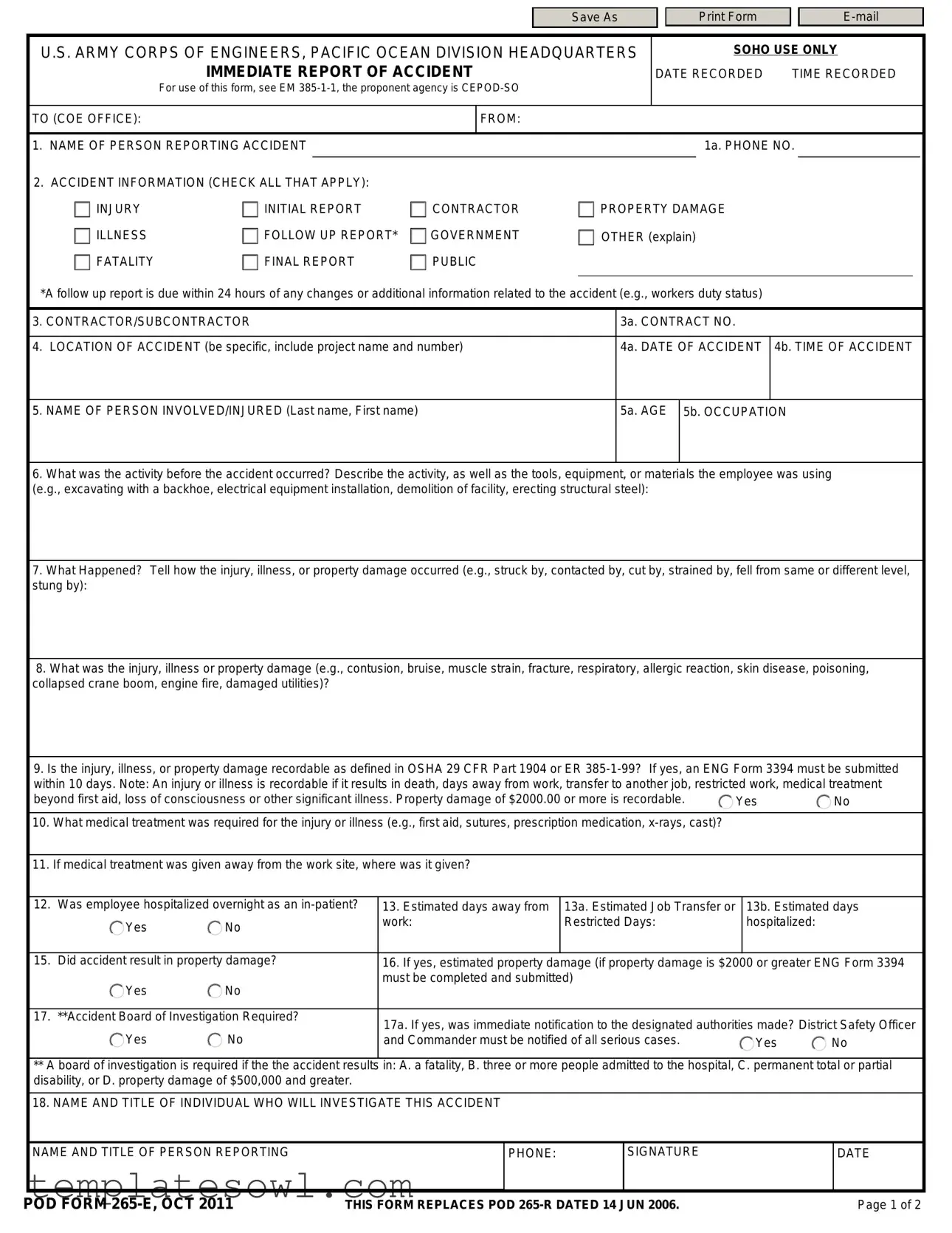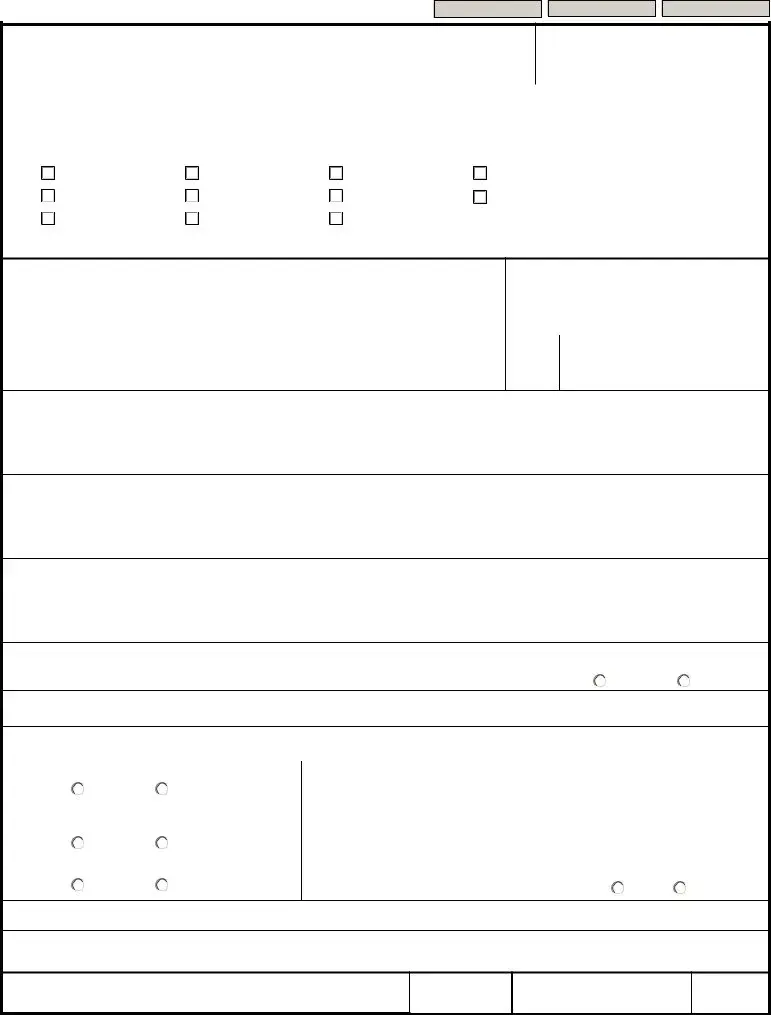What is the purpose of the Pod 265 E form?
The Pod 265 E form is used by the U.S. Army Corps of Engineers to immediately report accidents that occur at work sites. It is essential to capture details about the incident, including the nature of the accident, the individuals involved, and any resulting injuries or property damage. This helps ensure that accidents are documented properly and allows for timely investigations and follow-up actions to promote workplace safety.
Who is required to fill out the Pod 265 E form?
The form is typically completed by the person who witnesses or is involved in the accident. This may include a supervisor, a safety officer, or the injured party themselves. It is crucial that the individual reporting the accident provides as much detail as possible to ensure accuracy and clarity for the appropriate authorities.
What information is needed to complete the form?
To fill out the Pod 265 E form, you will need to provide various details such as your name and contact information, specifics about the accident (time, date, location), the names and ages of those involved, a description of the activity that led to the accident, and details regarding any injuries or property damage. Additionally, it is important to indicate whether the incident is considered recordable according to OSHA standards.
What should I do if I need to submit a follow-up report?
If circumstances change or additional information becomes available after the initial report is filed, a follow-up report is necessary. This must be submitted within 24 hours of the initial report. Make sure to update all relevant details, such as changes in the injured person's duty status or new information regarding the accident.
Is there a requirement for medical treatment documentation after an accident?
Yes, if medical treatment is provided for an injury or illness resulting from the accident, details about the treatment must be included in the report. This includes the type of medical care received, where it occurred, and whether the employee required hospitalization. Keeping accurate medical records is crucial for both reporting and treatment purposes.
What determines if an investigation board is required following an accident?
An accident investigation board is necessary if certain conditions are met, such as a fatality, hospitalization of three or more individuals, permanent disability, or property damage exceeding $500,000. In these cases, notifying the designated authorities, including the District Safety Officer and Commander, is essential for compliance and thorough investigation.
How can I ensure accurate reporting on the Pod 265 E form?
To ensure accurate reporting on the Pod 265 E form, provide clear and detailed descriptions of the incident and any resulting injuries. Double-check all information for completeness before submission. Collaborating with coworkers who were present during the accident can also help gather additional insights to enrich the report. Accuracy is vital, as it not only affects compliance but also contributes to improving safety measures in the workplace.


